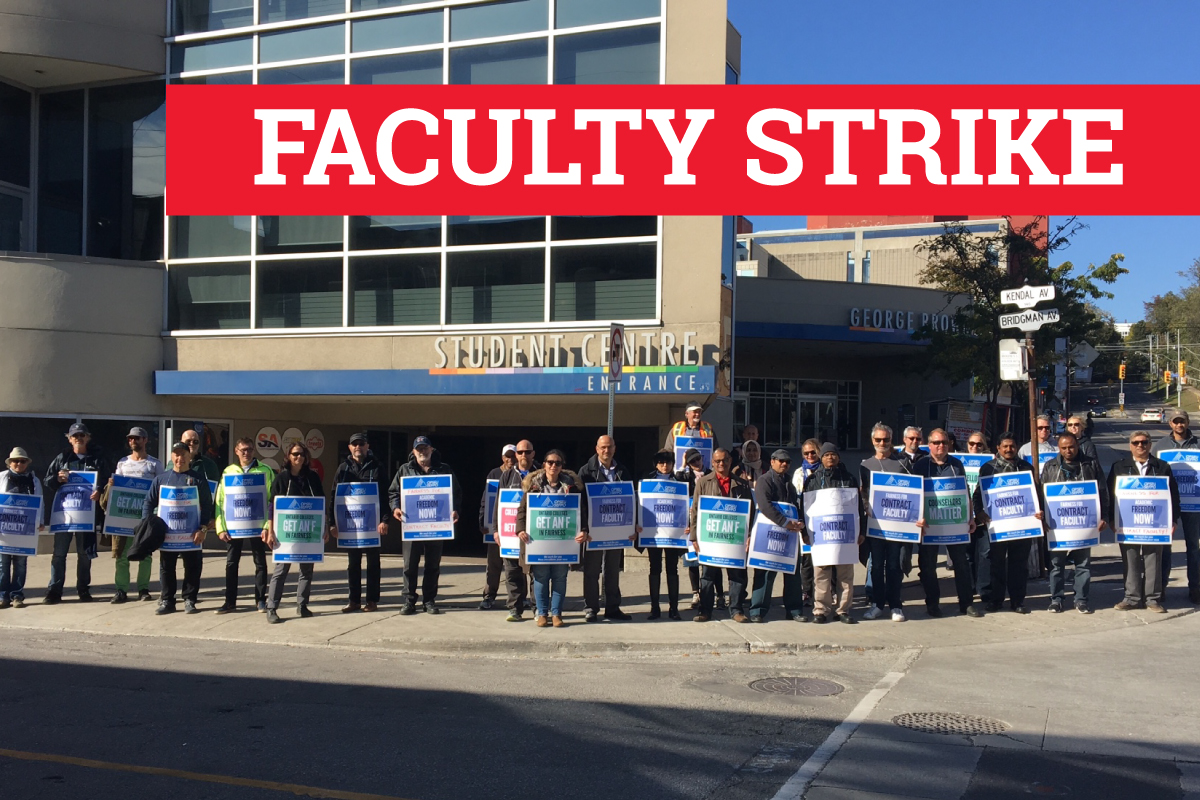Faculty strike averted at Ontario colleges as both sides agree to a deal! This unexpected breakthrough avoids potential disruptions to student learning and marks a significant turning point in labor relations within Ontario’s college system. The agreement, reached after intense negotiations and mediation, includes key concessions from both the faculty and college administrations, addressing crucial issues such as salary, benefits, and working conditions.
So, the Ontario college faculty strike is officially off—both sides finally came to an agreement. It’s a big deal, a real relief for students. This reminds me of another significant gathering: check out this amazing photo of All five living US presidents pictured together at funeral of Jimmy —a truly historic moment. Anyway, back to the colleges, hopefully, classes can resume smoothly now that the strike is over.
This article delves into the details of the agreement, exploring its implications for students, the negotiation process, and the future of Ontario’s colleges.
The averted strike represents a victory for both sides, preventing significant academic disruptions and maintaining a positive learning environment for students. The successful mediation process showcases the power of collaborative problem-solving in resolving complex labor disputes within the higher education sector. Understanding the intricacies of this agreement is crucial for anyone interested in the future of Ontario’s college system and the dynamics of labor relations in higher education.
Ontario College Faculty Strike Averted: An Analysis of the Agreement: Faculty Strike Averted At Ontario Colleges As Both Sides Agree To
The recent agreement between Ontario college faculty and administrations averted a potentially devastating strike, preserving the academic year for thousands of students. This analysis delves into the key provisions of the agreement, its impact on students, the role of mediation, broader implications for the college system, and the media’s portrayal of the events.
The Agreement’s Key Provisions
The agreement reached represents a compromise between the faculty’s demands and the colleges’ financial constraints. Significant concessions were made on both sides, leading to a contract that addresses key concerns regarding salary, benefits, and working conditions. The implementation timeline involves phased rollout of certain provisions over the next few years. This agreement differs from previous ones by incorporating a greater emphasis on workload management and professional development opportunities for faculty.
| Category | Previous Agreement | New Agreement | Timeline |
|---|---|---|---|
| Salary Increase | 2% annually | Variable, ranging from 3-5% annually depending on job classification, with a focus on addressing salary compression. | Phased increase over 3 years. |
| Benefits | Standard benefits package | Enhanced benefits package including improved parental leave and mental health support. | Implemented immediately. |
| Workload | No specific workload stipulations | Clearer guidelines on teaching hours and administrative duties, with increased support for course preparation. | Guidelines implemented within the first year, with ongoing review and adjustments. |
| Professional Development | Limited funding | Increased funding for professional development opportunities and training. | Funding available immediately, with program rollout over two years. |
Student Impact and Reactions

The averted strike significantly minimized disruption to student learning. While the threat of a strike caused anxiety and uncertainty, the eventual agreement allowed the academic calendar to proceed without major interruption. Student feedback generally expressed relief at the averted strike, but also highlighted concerns about the potential long-term effects of the negotiations on tuition fees and program quality.
A hypothetical scenario of a strike would have involved significant delays in course delivery, potential cancellation of classes, and disruption to exams and assessments. This could have led to academic setbacks for students, particularly those in final years of their programs, and potential financial implications due to program delays.
The Role of Mediation and Negotiation

The negotiation process involved key figures from the faculty union (OPSEU), college administrations, and a government-appointed mediator. The process included several rounds of talks, with crucial turning points involving compromises on key issues such as salary increases and workload management. Both sides employed a mix of collaborative and adversarial strategies, with the mediator playing a vital role in facilitating communication and finding common ground.
- June 2023: Initial contract negotiations begin.
- August 2023: Negotiations stall; a mediator is appointed.
- September 2023: Mediated talks resume.
- October 2023: A tentative agreement is reached.
- October 2023: Ratification vote by faculty.
Broader Implications for Ontario’s College System, Faculty strike averted at Ontario colleges as both sides agree to

This agreement sets a precedent for future labor relations within Ontario’s colleges. It highlights the importance of proactive negotiation and mediation in resolving disputes, while also emphasizing the need for sustainable funding models to support both faculty compensation and program quality. The agreement’s focus on workload management could lead to more efficient resource allocation within colleges.
A visual representation of the interconnectedness of stakeholders would show a central node representing the college system, with connecting lines to nodes representing faculty, students, administration, and the provincial government. Each node would have a size proportional to its influence, highlighting the interdependent nature of the college system and the need for collaboration among all stakeholders.
Public Perception and Media Coverage
Media coverage initially focused on the potential disruption of a strike, highlighting the impact on students and the economy. As negotiations progressed, the focus shifted to the details of the proposed agreement, with varying perspectives on the fairness and efficacy of the compromises reached. Public opinion played a role in influencing the outcome, with pressure on both sides to reach a resolution that minimized disruption to students’ education.
The framing of the dispute varied across media outlets, reflecting differing political leanings and priorities.
So, the Ontario college faculty strike is officially off! Both sides finally came to an agreement, which is great news for students. It reminds me of how people come together in crises – like how actor Steve Guttenberg described his experience with the Palisades Fire in this article: Actor Steve Guttenberg recounts his Palisades Fire experience.
His story highlights the importance of collaboration during difficult times, much like the resolution reached in the faculty dispute. Hopefully, this means smooth sailing ahead for Ontario colleges.
Final Conclusion
The averted faculty strike at Ontario colleges marks a pivotal moment, demonstrating the potential for collaborative problem-solving in higher education labor disputes. The agreement reached, while a relief for students and the college system, also sets a precedent for future negotiations. The successful mediation and the concessions made by both sides highlight the importance of compromise and communication in resolving complex issues.
The long-term implications of this agreement will undoubtedly shape labor relations and potentially influence funding models and government policies within Ontario’s colleges for years to come. It’s a testament to the power of dialogue and negotiation in resolving critical challenges facing higher education.
So, the Ontario college faculty strike is officially off! Both sides found common ground, which is great news for students. It’s a stark contrast to the situation with the illegally released lynx, as reported in this NatureScot statement: Illegally released lynx captured – NatureScot statement. Hopefully, similar cooperation can resolve that situation too, returning the lynx to safety, much like the averted strike brought peace to Ontario’s college campuses.
Common Queries
What were the biggest sticking points in the negotiations?
While specifics weren’t publicly released, reports suggest salary increases, workload concerns, and benefits were major points of contention.
How long did the negotiations last?
The exact duration isn’t readily available, but the process involved multiple sessions over an extended period, likely spanning several weeks or months.
What is the expected impact on tuition fees?
The agreement’s impact on tuition fees is unclear. It’s possible that increased costs associated with the agreement might indirectly affect future tuition decisions, but this is speculative.
What role did the government play in the negotiations?
The government likely played an indirect role, potentially through funding and policy implications, but the specifics of their involvement during negotiations remain undisclosed.
